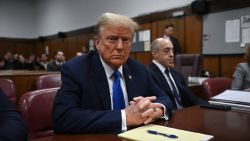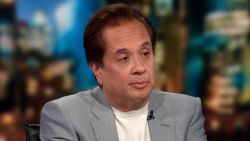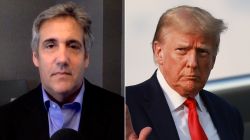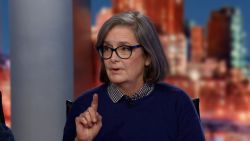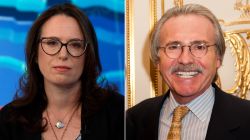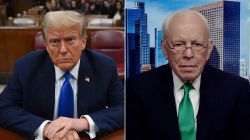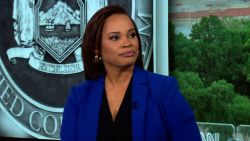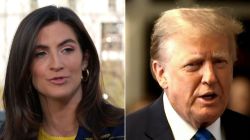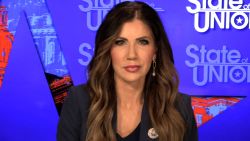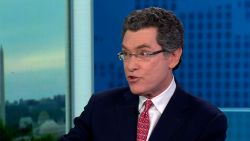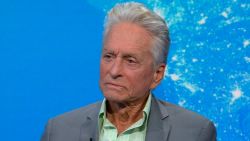As President Donald Trump languishes in a grievance spiral that began with his offhand suggestion last week about ingesting household disinfectants and devolved this weekend into angry online venting about his press coverage, the White House coronavirus task force may soon begin slowly scaling back its number of meetings, a source familiar with the decision told CNN.
The panel wasn’t expected to meet on Monday, though some of its members were planning to join a midday phone call scheduled for Trump with the nation’s governors.
At the same time, the White House was publicly waffling on whether to convene a press briefing after political advisers encouraged the President to phase them out. After listing one on Trump’s daily schedule, the White House revised it to show no briefing, only to declare an hour later he would convene a press conference at the usual time.
A White House aide said plans were being made for a 5 p.m. ET statement by the President in the Rose Garden. He is expected to emerge after meeting with retail executives and would likely be joined by them, though it is up to the President if he will take questions from reporters.
The plans could, of course, change again.
The move away from briefings and daily task force meetings, and toward more contained events highlighting the economy, comes as the virus continues to rage in parts of the country and as testing shortfalls persist. Still, as curves begin to flatten in certain areas and states begin the process of reopening, Trump – who has become progressively more frustrated at a precarious political moment – is keen to show signs of progress.
Over the last several days, an exasperated President lashed out at aides, the media and Democrats in what multiple sources described to CNN as one of the most frustrated moments of his presidency.
The health-focused task force met only once this weekend, according to three people familiar with the schedule, after a tumultuous few days in the West Wing prompted by the disinfectant episode. The task force met Saturday but did not convene Sunday – a rarity since the task force has met almost every day since it was assembled months ago.
Task force meetings, which occur in the basement Situation Room, usually last a minimum of 90 minutes as aides go over the latest data before the once-daily press briefing. But there was no briefing this weekend, and the meeting Saturday moved relatively quickly, a person who attended said.
That could presage things to come. There had been a concerted effort among aides and allies to convince Trump to stop conducting the daily coronavirus briefings, multiple sources told CNN, after concerns they were causing the President steep political damage.
A briefing was initially listed on Monday’s public White House schedule, but the press secretary later said there would be no dedicated question-and-answer session after all. The schedule was revised to reflect the change.
But an hour after that, press secretary Kayleigh McEnany tweeted that plans had changed again.
“UPDATE,” she wrote, “The White House has additional testing guidance and other announcements about safely opening up America again. President @realDonaldTrump will brief the nation during a press conference this evening.”
After weeks of briefings that sometimes stretched more than two hours, a general agreement emerged in the West Wing last week that some of the news conferences have gone on too long, resulting in a situation where Trump got sidetracked on non-coronavirus related issues. The result, aides have noticed, is that the briefings stray into politics, arguments and venting instead of the matter at hand.
Instead of a stoic wartime leader, Trump has come across as angry and aggrieved at not getting credit for his efforts – an image that hasn’t endeared him to Americans, according to polls, which have shown his approval rating dropping after an initial bump.
McEnany told reporters at the White House on Monday the briefings “might have a new look to them, a new focus to them.” She declined to provide further details.
Some White House aides also view an eventual phasing-out of the briefings as a sign from Washington to the country that life is slowing returning to normal. They see the briefings as a set-piece of the crisis era, which Trump is desperate to see end.
To that end, two officials said the White House is planning more economy-focused events in the coming days and weeks, including more roundtables with CEOs and workers meant to highlight efforts to spur an economic recovery. They hope to invite people who have been helped by stimulus funds or small business loans to showcase the steps the administration has taken to mitigate the economic fallout.
On Monday, the White House invited retail executives for a meeting in the Cabinet Room to discuss that beleaguered industry as the administration prepares more specific guidance on how different sectors can reopen.
The new economic focus could also include domestic travel, potentially as soon as this week, one official said, though the official cautioned that plans haven’t been finalized for the President to leave the White House after weeks spent inside the executive mansion and West Wing. Like almost all the President’s pre-outbreak official travel, he is not expected to spend the night on the road.
Aides believe Trump is better positioned to drive an economic message rather than a health one, officials said, a fact they feel was proved true after last week’s disinfectant disaster.
For a leader who has been confined to his home for weeks, the fallout from the episode has seemed magnified. The President spent the weekend venting about the negative coverage he received after he suggested last week there should be studies on whether disinfectants or light could be used to fight the coronavirus inside the human body.
He continued the Twitter assaults on Monday, returning to a favorite insult by declaring “FAKE NEWS, THE ENEMY OF THE PEOPLE.”
One of the matters weighing heaviest on the President, people close to him say, are his sinking poll numbers – though his restricted movements, with no campaign rallies or weekend golf trips, haven’t helped. People who speak with Trump often said he’s internalizing negative coverage more than ever because he doesn’t have his usual outlets, such as golf or seeing old friends.
Meanwhile, divisions are emerging among the staff in the West Wing. The new White House communications team has decided to retake control of the coronavirus messaging that Pence’s staff had been handling.
The new chief of staff, Mark Meadows, installed a new press secretary and communications advisers when he replaced ousted chief Mick Mulvaney, who had allowed the task force operations to coalesce under Pence’s office after he was tapped to lead the panel in late February.
That brought a heightened sense of mission to what was then a group racked with infighting and poor communication.
The fate of the person who previously led the task force – Health and Human Services Secretary Alex Azar – remains uncertain. Trump on Sunday evening was forced to deny he was going to fire Azar after a series of news reports Saturday night quoted anonymous sources saying White House officials were looking at the possibility of replacing the health chief.
The public pushback came after multiple calls between Trump, Azar, Meadows and White House senior adviser Jared Kushner, who addressed the stories in the conversations and worked through the best way to respond, according to people familiar with the matter.
Even as the task force scales back its meeting frequency, the panel will still weigh key guidelines and recommendations as parts of the country move to reopen. The administration could issue as early as this week a new set of guidelines on opening specific types of businesses as Trump looks to revive the US economy, people familiar with the matter say.
The new guidelines would provide more detailed recommendations on how to reopen restaurants, child care centers, camps, public transportation and places of worship, with a focus on keeping people spaced apart and hygiene practices ramped up to prevent the coronavirus from re-spreading.
Members of the task force have been weighing a set of recommendations produced by the US Centers on Disease Control and Prevention that includes items such as keeping tables separated and improving indoor ventilation.
One official says that lobbying interests have flooded the White House in recent days hoping to influence the recommendations, which could have an effect on businesses’ bottom lines.
CNN’s Jeff Zeleny contributed to this report.
This story has been updated with additional reporting.





